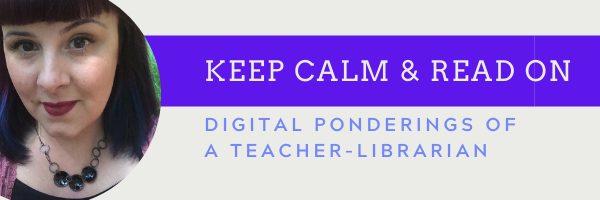1. Students didn't know how to upload a word document to Moodle (although they had been doing this for two months with their classroom teacher).
2. When saving their work, students were changing the extension of their document so that it could not be read. For example, a document should be saved with the extension, ".doc" and students were renaming the entire file.
3. Students did not know what a web address was, or where to find it on their browser page.
4. Students were not thinking critically about the websites that they visited.
5. Students were unaware of any other search engines other than "Google".
6. Students written work was not greatly improved by the use of a computer.
The last discovery shocked me. I was sure that written fluency would improve with the use of computers. This online assignment that I had given to my students certainly gave me much to think about in regards to written fluency and information literacy. That got me thinking, how can I use these observations to help students improve? I need to think about which tool will my colleagues be most likely to embrace? I have to think of my colleagues comfort level with technology, how much prep and maintenance will have to be put into this tool, the technology that we have available for use at our schools........ Hmmmm...... I need something that is fast, free, and easy to use and maintain that also creates opportunities to address these issues that my students are having with online learning and information literacy. That is when I decided what tool I should introduce and encourage. Are you ready for it?
Drum roll please..........................
The Web 2.0 tool that I would like to start with is Blogs and Blogging for the classroom. Below you will find my "case" for blogging. Enjoy!!
BLOGS AND BLOGGING IN THE CLASSROOM
WHY?
Even though blogging may begin as an extension of student's notebooks, with your encouraging comments and guidance, your students will begin to see that they belong to a global online community of learners.
Visit Mr. Kuroneko's blog to read about six reasons why you should get your students blogging, or if you prefer, check out this You Tube video that has students talking about why they love blogging in their classroom. In short, this is what blogging can do for your students:
* Create an authentic task and give purpose and audience to your student's writing.
* Provide opportunities for meaningful conversation amongst students and other readers.
* Give your students a global audience.
* Create learning opportunities outside of the classroom.
* Provide an educated guide to communicating on the internet.
* Weblogs promote literacy in your classroom (see article).
* Increase student's written fluency (see article).
* Free publishing!
* Provide a safe venue for sharing.
* Give your students a voice!
ARE YOU INTRIGUED YET?
Here's something to think about. When you are teaching writing, think about how you go about doing it. Mini lessons, peer editing, draft writing, and then finally, the finished product. Who reads it then? The author, his/her peers, his family, and the teacher. The result is that the piece of writing comes to an end, and usually ends with the teacher. That is a relatively small audience compared to world-wide publishing! Blogging allows for the same steps to be taken, but does not end with the teacher. Blogs are posted for the world to read and comment on. What, you don't think that your students will believe that others are reading their work? Well now, there is a widget for that! Have you ever heard of a site visitor feed or a cluster map? These add-ons allow blog authors to see who has visited their website! Visit Kathy Cassidy's classroom blog to see how she is using blogging in her classroom and see what visitors are stopping by to read her blog.

Come to think of it, there are many, many wonderful classroom blogs out there to visit. Here are a few that I think are particularly good examples of classroom blogs, don't forget to read the comments, sometimes the most powerful conversations happen in the comments section.
Mr. Miller's English 10 Blog
Mrs. Merk's Blog Titled: Wormbins
Mrs. McNamara's Class Blog
Just a few out of hundreds! If they can do it, you can to!
So, have I won you over yet? If you are sold on the idea of blogging and would like to start your journey into the Edublogosphere, here is a short video on how to start your own blog at Blogger.com.
Stepping Out
So, there you have it. My quick and dirty push for blogs in the classroom. Of course, this is just a start to my plans. I am quite fortunate to have many opportunities to share my Web 2.0 journey with colleagues in my district. Not only do I have access to an amazing TL networking group, I am also a member of a group of TL's that have been approved for a grant to explore and implement Web 2.0 tools into our libraries. I'm also the Literacy teacher at my school. With the role of Literacy teacher and Teacher-librarian, I am able to create opportunities to co-plan and co-teach with teachers, giving them additional support to bring these technologies into their classroom which will further increase the chance of a successful implementation!
Hope you enjoyed this week's post. I would really enjoy reading any comments about how blogs are being used in your classrooms. Please send me links to your classroom blogs as well as I am always looking to expand my cache of great reads!


